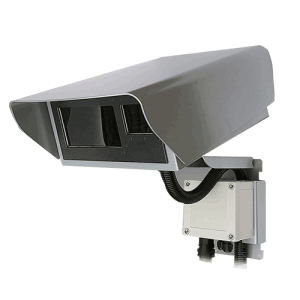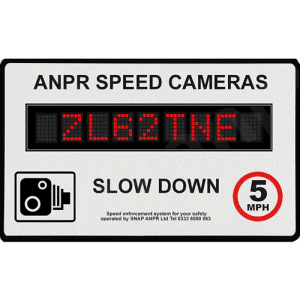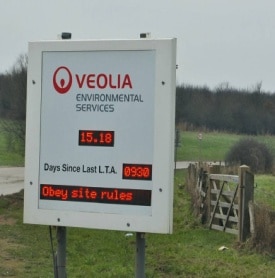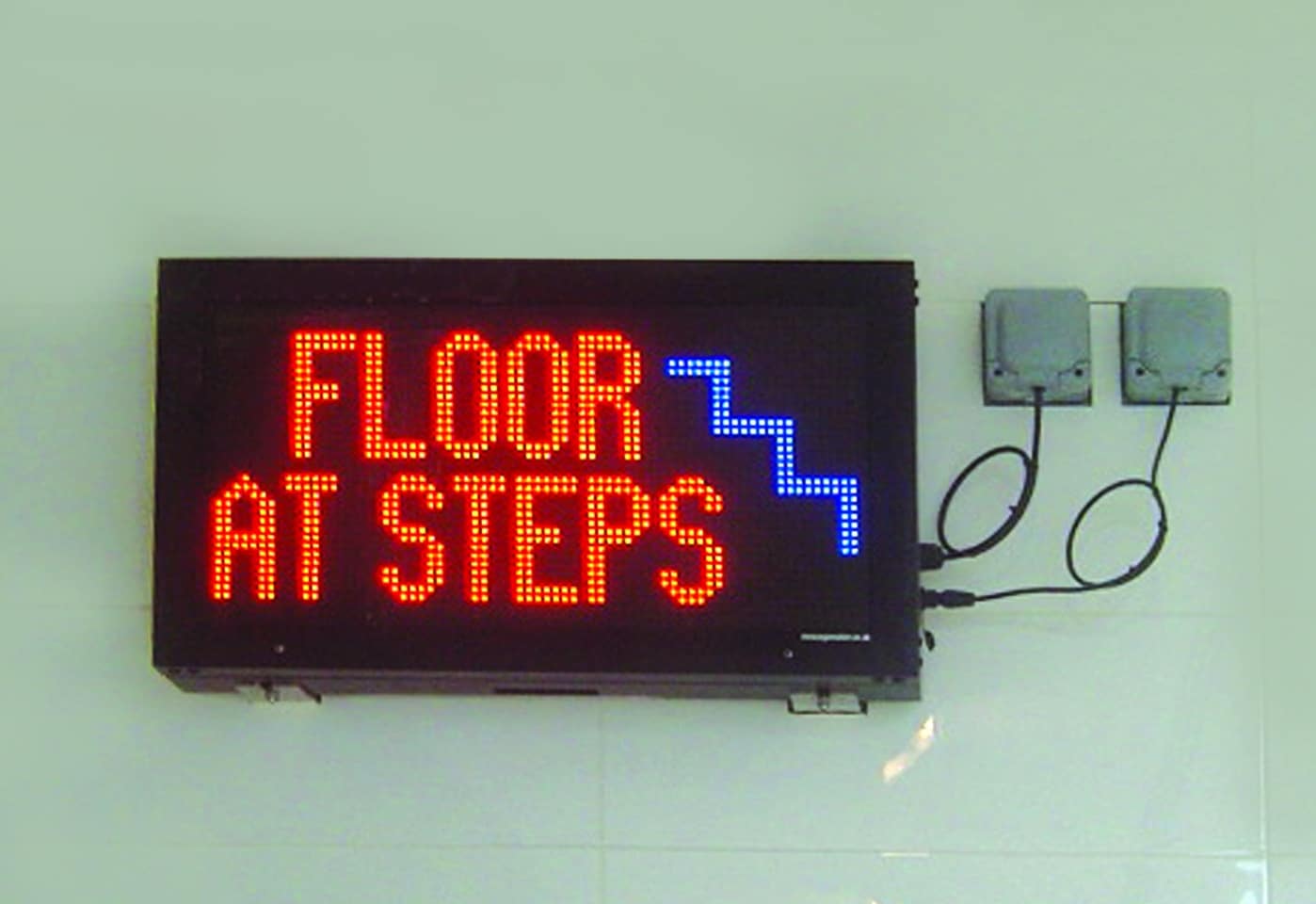Guide to Automatic number-plate recognition systems (ANPR)
16th December 2021
ANPR stands for Automatic Number Plate Recognition.
Automatic number-plate recognition is a technology that uses optical character recognition on images to read vehicle registration plates to create vehicle location data. It can use existing closed-circuit television, road-rule enforcement cameras, or cameras specifically designed for the task.
This type of system is a very handy tool for any business to have. It will allow you to gain information to help with traffic management and vehicle recognition.
What is Automatic Number Plate Recognition?
This system serves the purpose of vehicle monitoring. It can detect number plates of moving vehicles with agility. Yet it does not fail to provide accurate information about a vehicle. It can also be used to identify threats from vehicles that have been banned from your premises, this is a great way to keep an eye on your premises.
The steps involved.
Capturing the image of the vehicle – An image of the offending vehicle or vehicle of interest will be captured when detected by the ANPR system.
Number plate detection – The ANPR system will then locate the number plate in the image.
Character segmentation – The number plate characters will then be separated to ensure they are clear and concise.
Character recognition – Finally, the system will use the separated images to recognise individual characters and convert them to text, for easy usability for the end user.
ANPR systems provide smarter vehicle surveillance solutions.
Automatic number plate recognition, or ANPR cameras, have been around in the UK for over 15 years, but are becoming a more frequent site along Britain’s roads.
How does it work?
To cut a long story short; a camera takes a picture of a vehicle and uses software to identify characters in the registration number. Once it has “read” a number plate it’s converted into text data and sent to a central database to be recorded.
The cameras are fitted with infra-red sensors. This is so they can get a clear capture of the number plate and avoid glare. They can also work at night.
They are fitted with special software that allows the camera to look for the information it requires.
What is ANPR used for?
ANPR cameras are predominantly used by the police for tackling crime but also by other agencies, such as private parking companies who these the software to track vehicles that are entering and leaving their premises and individual companies to manage their on-site traffic.
ANPR can be used to track vehicles by recording the registration on several cameras across a route, for example. Police also use it to locate wanted criminals by their vehicle or crosscheck with the DVLA database to find untaxed vehicles. Whereas companies can use it to identify speeding vehicles through their car park, in both scenarios, when a vehicle passes an ANPR camera, its registration number is read and instantly checked against database records of vehicles of interest.
In general, number plate recognition cameras can detect or be used to calculate the following:
- Average speed of vehicles
- Untaxed vehicles
- Uninsured vehicles
- Stolen vehicles
- Instances of terrorism, major and organised crime
- Traffic flow
- Bus lanes and box junctions
- Parking in car parks
- The use of toll roads
- The London congestion zone
- Traffic journey times.
A brief history of ANPR systems
ANPR was invented in 1976 in the United Kingdom. ANPR (Automatic Number Plate Recognition) was originally used in the United Kingdom in the 1980s and has since become a standard in traffic control.
In 1993, the London Metropolitan Police implemented the ‘Ring of Steel’ camera network around the City of London – which included ANPR cameras – in a bid to end a series of terrorist bombings conducted by the IRA.
In the late 1990s, technology developments meant that ANPR cameras no longer needed to be assigned pre-defined criteria (such as the angles, directions, and speeds at which vehicles would be passing at). This allowed fixed-ANPR cameras to become mobile.
In 2003, signifying the first large-scale, civic use of ANPR, the London Congestion Charge scheme was created thanks to almost 700 ANPR cameras on every road which enters and exits the Charging Zone.
Parking Management
ANPR cameras automatically read number plates, recording a vehicle’s entry and exit into a car park. If someone has already paid online, the ANPR system will be able to read the number plate, send it to a database, and signal for the barrier to open. It can also detect if the system hasn’t received a payment from a vehicle, making it easy to monitor payments and fines.
Many car parks use ANPR parking systems to monitor the length of time a vehicle was parked and if the parking fee was paid, which can be done by connecting the ANPR system to the database from the car park ticket machine.
ANPR parking has many benefits such as ticketless parking, the ability to track the number of available spaces, easier payment processes (e.g., via an app), and car theft prevention.
ANPR car parks also provide additional security by matching the vehicle’s number plate to the ticket issued, preventing ticket fraud. Timed photographs taken from ANPR systems can also give an accurate recording of how long a vehicle has parked there.
Tolling
Similar to parking management, ANPR technology is used in tolling systems by reading number plates which are fed through a system to indicate when payments have or have not been paid. The database then allows for the driver to be contacted regarding any missing payments for suitable action.
The main benefit of using ANPR systems instead of the traditional payment booth is a significant reduction in queuing traffic by eliminating the need for vehicles to stop. Above payments, some ANPR systems can go one step further by calculating journey times, speeding vehicles, or highlighting vehicles of interest to the police.
Bus Lane Management
So, you’re patiently waiting in queuing traffic when suddenly the not-so-patient motorist behind you cuts the queue and speeds down the bus lane, then more motorists join in, and before you know it, the bus lane is full; frustrating for you and the bus which is now running late.
Not only is it frustrating, but it can be dangerous so ANPR cameras are being deployed all-round the country on bus lanes to deter motorists and prosecute those who do break the rules.
Intelligent Transportation Systems (ITS)
ITS encompasses a wide breadth of technologies that are constantly evolving to keep improving road safety, efficiency, and pollution. ANPR technology is one of those evolving technologies which will see ANPR being used with less human interaction and across more applications.
According to Ivo Paton of Imagsa Technologies, “Value will be added in the form of vehicle classification and the addition of features such as GPS time and location, analysis of vehicle trajectory and speed, facial recognition and traffic signals status. ANPR systems have evolved from distributed solutions that are difficult to install and set up, to compact all-in-one solutions. This will continue and include smart tools to automate on-site set-up.”
How Many Are There in the UK?
According to Big Brother, there are nearly 9,000 ANPR cameras operating in the UK
How Long is the Data Held for?
According to the police, ANPR data is stored for a maximum of one year. That said, the police staff only have access to ANPR data if it is relevant to their role and most can only access it for 90 days from the date it was collected. Some police staff can access data for up to a year, subject to authorisation. When being used in a private capacity, this time frame can vary, but there is currently a review of ANPR Infrastructure so we may have a set answer soon.
Conclusion
With the innovative advancement in ANPR taking place, the technology is getting more versatile in its capabilities and integration possibility. As a result of this, many industries are benefiting from enhanced security, easier resource management, increased accuracy and efficienct enforcement. Most of the public are now aware and familiar with ANPR technology now that we see it more and more in our daily lives in car parks and law enforcement. Undoubtedly we will see the popularity and integration of ANPR technology increase across law enforcement, car park management, and more.
 BACK
BACK




